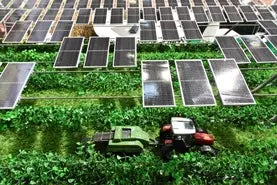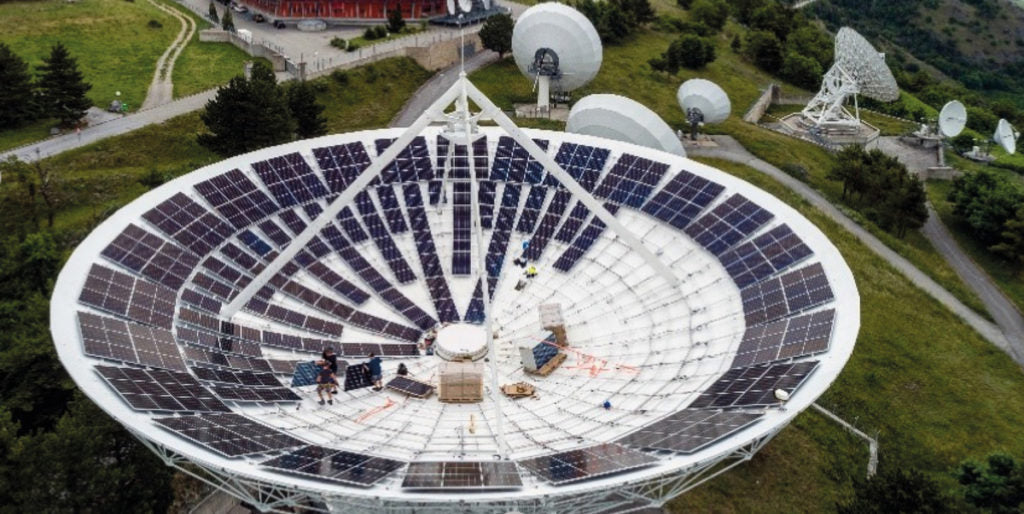https://solarquarter.com/2022/04/26/engineers-enlist-ai-to-help-scale-up-advanced-solar-cell-manufacturing/
Engineers Enlist AI to Help Scale Up Advanced Solar Cell Manufacturing
Reading Time: 7 minutes
Perovskites, a class of materials, are the most promising contender to replace current silicon-based solar PVs. They promise panels that can be thinner and lighter, which could produce high throughput at room temperature rather than at hundreds of degrees. Additionally, they are easier to transport and set up. However, it was difficult to bring these materials from controlled laboratory studies into a product that can easily be manufactured competitively.
Making perovskite solar cells requires optimization of at least 12 variables at once. This is even when using one manufacturing process among many. However, a new approach to machine learning can speed up the development process for optimized production methods and make the next generation solar power a reality.
This machine-learning system was developed by Stanford University researchers and MIT over several years. The system allows you to combine data from past experiments with information based on personal observations and other information. This allows for more precise results, and has already enabled the manufacture of perovskite cells that have an energy conversion efficiency (18.5%) which is competitive in today’s market.
Today’s research is published in Joule. It was written by Tonio Buonassisi MIT professor and Reinhold Dauskardt MIT professor and Stanford professor of materials sciences engineering Reinhold Dauskardt. The paper also includes a recent MIT research assistant Zhe Luu, Nicholas Rolston, Stanford doctoral student Nicholas Rolston and three others.
Perovskites are a collection of layered crystalline compounds. Their structure is determined by the arrangement and configuration of the atoms inside their crystal lattice. There are thousands upon thousands of possible compounds and many different methods of making them. Perovskite materials can be developed at a lab scale using a spin-coating method. However, this is not practical for large-scale manufacturing. So companies and labs around world are looking for ways to convert these laboratory materials into a useful, usable product.
Rolston, now assistant professor at Arizona State University, says that it is always difficult to transfer a lab-scale process to a startup or manufacturing line. They looked at a process called rapid plasma processing or RSPP, which they believed had the most potential.
Manufacturing involves a roll-to-roll surface or series sheets. The precursor solutions for the perovskite chemical would then be sprayed on the sheets as they move. Rolston states that after the material is cured, it would move to a curing phase. This provides a continuous and rapid output with throughputs that exceed those of any other type of photovoltaic technology.
“The true breakthrough with this platform was that it would enable us to scale in ways that no other materials have allowed us to do,” he says. The processing required to make silicon requires a longer timeframe than other materials. You can consider this more like spray painting.
The outcome of the process can be affected by at least twelve variables, each with a greater controllability. These factors include the composition and humidity of the materials used, as well as the speed and distance of the nozzle that sprays the material onto a substrate. The curing methods are also important. There are many factors that can interact with one another. For example, humidity might be unpredictable if the process occurs in open air. Experimentation cannot evaluate all possible combinations of variables, so machine learning was used to guide the experiment.
While machine-learning systems typically use raw data like measurements of electrical properties of test specimens, they don’t usually include human experience such qualitative observations of the visual and other property of test samples made by experimenters or information from experiments conducted by other researchers. The Bayesian Optimization mathematical technique was used to create a probability factor that would allow for such additional information to be incorporated into the machine-learning model.
The system is able to detect trends that were previously hidden by the experimental data. Uncontrolled humidity variations in the ambient environment were a problem at first. They were able to adjust for humidity by changing the temperature or some of the knobs, according to the model.
The system allows experimenters now to quickly guide their process to ensure that it is optimized for the desired outcome or set of conditions. Buonassisi said that although the team was primarily interested in optimizing the power output of their experiments, it could also be used to incorporate other criteria like cost and durability. Buonassisi is continuing to work on this.
The Department of Energy supported the research, so they encouraged them to commercialize it. They are currently focusing their efforts on technology transfer to existing perovskite manufactures. Buonassisi said that they are reaching out now to companies. The code they wrote has been freely made available on an open-source web server. Buonassisi says that the code is now available through GitHub. Anyone can access it and run it. “We are happy and able to assist companies with using our code.”
Already, many companies are preparing to produce perovskite based solar panels. But, they are still figuring out the details, says Liu. He is currently at the Northwestern Polytechnical University, Xi’an. He said that companies in China are not yet producing large-scale production, but rather start with small, high-value applications, such as building-integrated, solar tiles, which have a beautiful appearance. He states that three of these companies are “on track” or being encouraged by investors to produce 1 meter by two meter rectangular modules, comparable to today’s most popular solar panels, within two years.
Liu states, “The problem is that they don’t have consensus on which manufacturing technology to use.” He believes that the RSPP technique, which was developed by Stanford, has a “good chance of being competitive.” The machine learning system developed by the team could help guide the optimization of any process.
“The primary objective was to accelerate it, so it required less research, less time and more hours to create something that could be used immediately, free of charge, for industry.” he said.
“Existing work on machine-learning-driven perovskite PV fabrication largely focuses on spin-coating, a lab-scale technique,” says Ted Sargent, University Professor at the University of Toronto, who was not associated with this work, which he says demonstrates “a workflow that is readily adapted to the deposition techniques that dominate the thin-film industry. Only a few people have the combined engineering and computing expertise necessary to drive these advances. Sargent states that this approach “could prove to be an exciting advance in the manufacture a broader range of materials”, including LEDs and other PV technology, as well as graphene. “In short, any industry that utilizes some form of vacuum or vapor deposition.”






